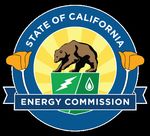BUILDING ENERGY EFFICIENCY STANDARDS SUMMARY 2022
←
→
Page content transcription
If your browser does not render page correctly, please read the page content below
Executive Summary
The California Energy Commission (CEC) is the state’s primary energy policy and planning agency with a mission to
lead the state to a 100 percent clean energy future. The CEC develops policy to reduce energy usage and costs, limit
How Do Standards Affect Me?
the environmental impacts of energy generation and use, and ensure a safe, resilient, and reliable supply of energy. The standards help everyone! As standards require upgrades water-saving measures in the standards lead to more efficient
such as better insulation and more effective climate control in appliances and building fixtures that buoy California’s water
buildings, the increases in energy efficiency reduce utility bills. supply and save energy by using and moving less water.
What Does the CEC Have to Do With the Building Code? This also improves comfort inside buildings. The standards
Homes and businesses use nearly 70 percent of California’s
electricity and are responsible for a quarter of California’s
HOMES AND BUSINESSES USE increase the market value of properties by making them more
affordable to operate. They reduce GHGs by using less energy
Thanks in part to California’s efficiency standards, the state’s
per capita energy use has stayed nearly flat since the early
greenhouse gas (GHG) emissions. As California’s energy
policy agency, the CEC was mandated by the Warren-
NEARLY 70 PERCENT from fossil fuel-burning power plants that emit harmful smog-
forming pollutants and climate-changing gases. Some of the
1970s, even as the state’s economy grew by 80 percent.
Alquist Act to periodically update and adopt building OF CALIFORNIA’S ELECTRICITY AND
standards to increase energy efficiency of buildings and
reduce GHGs. Part 6 of Title 24 implemented this mandate ARE RESPONSIBLE FOR A QUARTER
so that every three years the CEC presents Building
Energy Efficiency Standards (Energy Code) updates for OF CALIFORNIA’S GREENHOUSE
new construction and renovations to existing buildings.
GAS (GHG) EMISSIONS. CALIFORNIANS USE
After the CEC adopts these standards, they are submitted 31 PERCENT
LESS
to the California Building Standards Commission for
approval and inclusion with other changes to the
building code. The Energy Code is designed to be
cost-effective so that implementation is affordable ENERGY
while helping California manage energy demand and
advance the state’s climate and clean air goals.
COMPARED TO THE
AVERAGE AMERICAN
1 2WHAT’S NEW The proposed 2022 Energy Code update focuses on four
key areas in new construction of homes and businesses:
2022?
• Encouraging electric heat pump technology and use
FOR • Establishing electric-ready requirements
when natural gas is installed
• Expanding solar photovoltaic (PV) system
and battery storage standards
• Strengthening ventilation standards
to improve indoor air quality
2022 Energy Code: Better for the Environment and You
Heat pumps use less Electric-ready building sets Using battery storage Better ventilation can reduce
energy and produce fewer up owners to use cleaner allows onsite energy to be illness from poor air quality and
emissions than traditional electric heating, cooking, and available when needed and reduce disease transmission.
HVACs and water heaters. electric vehicle (EV) charging reduces the grid’s reliance
when they’re ready to invest on fossil fuel power plants.
in those technologies.
3 4The Energy Code in Action It’s an Area We Call the The Energy-Efficient Revolution Continues
“Climate Zone”
California is so vast and varied in
Since 1978, energy standards have supported California’s landscape and weather that there
long-term strategy to meet energy demand, conserve 40 YEARS is no one building design that
The CEC was born of the energy crisis that affected the United States in the early 1970s.
To address energy demand that outstripped supply, California created the CEC to design
can be the most energy-efficient
resources, and act as an environmental steward. All OF ENERGY EFFICIENCY everywhere. To accommodate those energy policy that reduced use through better efficiencies. The core focus of the building
building standards under consideration must be cost- differences, the state is divided into standards has been efficiency, but the 2019 Energy Code ventured into onsite generation
effective and technically feasible to be adopted. STANDARDS FOR 16 climate zones. Each climate zone by requiring solar PV on new homes, providing significant GHG savings. The 2022 update
represents a geographic area based
The Energy Code governs:
BUILDINGS AND on such factors as temperature,
builds off this progress with expanded solar standards and the move to onsite energy
storage that will help Californians save on utility bills while bolstering the grid.
APPLIANCES HAVE weather, and typical energy use.
Each zone has an assigned energy
• Window and door materials SAVED CALIFORNIANS budget, based on the maximum
amount of energy that a building
• Lighting MORE THAN (or portion of a building) can be
designed to consume per year.
$100 BILLION Minimum efficiency requirements are
created from that energy budget.
• Electrical panels
• Insulation
• Faucets
• And more
These requirements vary between home and business buildings, as well as among
climate zones in which they are implemented. The Energy Code applies to new
construction and renovations to existing buildings.
The Energy Code has not only revolutionized building construction in California,
but influenced efficiency goals and practices in countries around the globe. Every
update helps the state meet its energy and environmental goals while directly
benefiting building owners and occupants through more comfortable buildings
that save money on energy costs and, not incidentally, increase market value.
With climate change impacts accelerating, there is an even greater need
for homes that are comfortable, efficient, and resilient. Each updated code
guides the construction of buildings to keep energy use down, better
withstand extreme weather, and reduce climate and air pollution.
5 6UPDATES
New and more efficient technologies are being developed all the time, with many
supported by funding from state programs that bring these energy innovations to
How Does the 2022 Energy How Does It Affect
markets and consumers. The 2022 Energy Code builds on California’s technology Code Affect Homes? Businesses?
innovations, encouraging inclusion of market-ready electric products in new
OVER 30 YEARS,
construction, such as heat pumps for climate control and water heating. • Establishes energy • Establishes combined
2022
budgets based on solar PV and battery
FOR
The update also requires all new homes be electric-ready. That means buildings efficient heat pumps for standards for select
THE 2022 ENERGY CODE
with gas stoves have the electrical panels and wiring to support a switch to space or water heating businesses. Systems
electric stoves. Further advancements and cost reductions will continue to to encourage builders to are sized to maximize
expand electric options for heating, cooking, laundering, and EV charging to
install heat pumps over onsite use of solar
IS ESTIMATED TO PROVIDE
meet all Californians’ needs. These are crucial steps in the state’s progress toward
gas-fueled HVAC units. energy and avoid
100 percent clean electricity and carbon neutrality by midcentury, or earlier.
electricity demand
• Requires homes to be during times when
Proposed Standards 2022 Energy Code Benefits
electric-ready, with
dedicated 240-volt
outlets and space
the grid must use
gas-powered plants. $1.5 BILLION
IN CONSUMER BENEFITS
The 2022 Energy Code Increases on-site (with plumbing for • Establishes new
update revises energy renewable energy water heaters) so efficiency standards
efficiency standards generation from solar. electric appliances for commercial
for newly constructed
buildings, as well as
additions and alterations
Increases electric load
can eventually replace
installed gas appliances.
greenhouses (primarily
cannabis growing). AND REDUCE 10
MILLION METRIC
flexibility to support • Increases minimum • Improves efficiency
to existing buildings. The
grid reliability. kitchen ventilation standards for building
CEC engaged in a lengthy
public process leading requirements so that envelope, various
up to adoption of the
proposed 2022 standards.
Reduces emissions
from newly
fans over cooktops have
higher airflow or capture
efficiency to better
internal systems,
and grid integration
equipment, such as
TONS OF GHGS, EQUIVALENT
TO TAKING NEARLY 2.2
constructed buildings.
exhaust pollution from demand-responsive
gas cooking and improve controls to buoy
Reduces air pollution
MILLION CARS OFF
indoor air quality. grid stability.
for improved
public health. • Allows exceptions
to existing solar PV
Encourages adoption
of environmentally
beneficial efficient
standards when roof area
is not available (such
as for smaller homes).
THE ROAD FOR A YEAR.
electric technologies.
7 8Breaking Down the Updates The Challenge of Communities Ahead of the Curve
Existing Buildings
In addition to new buildings, California is already an international leader in energy efficiency and clean energy. However, after each update,
Heat Pumps: New Homes to Be Solar and Storage the standards apply to
substantial upgrades to existing
many cities and counties choose to adopt standards that exceed the state minimum. The California Green Building
The New Standard Electric-Ready Use Expanded homes and businesses. Standards (“CALGreen” or Part 11 of Title 24) include voluntary reach standards, which offer model building
code language for local governments that wish to go beyond the minimum statewide requirements.
Heat pumps are an electric The standards require The 2022 Energy Code Reach standards are an important tool for jurisdictions to meet their own climate goals. It allows them to decide on
technology for water and single-family homes to be extends solar and introduces standards that meet their needs and interests, so long as they also meet or exceed state code requirements.
space heating that increases electric-ready, including: battery storage standards to
efficiency, reduces GHGs, the following building types: Historically, such local ordinances have served as a bellwether for statewide standards. They provide a place to test market
and enables load flexibility. • Electrical circuits for readiness for new technologies and regulations, drive innovation of new technologies and efficiencies, and bring down
Current California market space heating, water • High-rise multifamily the cost of efficient building technologies by creating an installed user base that encourages scale manufacturing.
share is less than 6 percent in heating, cooking/ovens, (apartments and condos)
At least 50 percent of
new home construction. and clothes dryers.
• Hotel-motel single-family homes and
Standards include: • Electrical panel,
• Tenant space
nearly 60 percent of What’s Next?
branch circuits, and California’s apartment
In developing the standards over the past two years, the CEC met with more than 50 industry stakeholder groups, and
• Single-family homes transfer switch for • Office, medical complexes (about 14 million
43 public workshops were held.
— heat pump water battery storage. office, and clinics total residences) were
or space standard. built before the state’s first
• Dedicated circuits and Under the rulemaking, the standards are vetted over a 45- to 60-day period before they go to the CEC for adoption.
• Retail and grocery stores
• Multifamily homes such panels to easily convert energy standards. Then they are submitted to the California Building Standards Commission for approval as one part of the whole building
as apartment buildings from natural gas to • Restaurants code. Builders, contractors, and other stakeholders have one year until implementation to gear up for the change.
Updating older buildings is
— heat pump space electric in the future. critical to achieving the state’s
• Schools
heating standard. climate and clean energy goals.
• Businesses — heat
• Civic (theaters, 2022 Energy Code Update Timeline
auditoriums, and
pumps standard for
convention centers)
schools, offices, banks, California Energy Commission Adoption August 2021
libraries, retail, grocery.
California Building Standards Commission Approval Hearing December 2021
Effective Date January 1, 2023
9 10For Further Reading
• The Rulemaking Process: bit.ly/3fPO2H8
• 2019 Building Energy Efficiency
Standards Frequently Asked
Questions: bit.ly/3fJHOs8
• 2019 California Energy Efficiency Action
Plan: (overall webpage) bit.ly/3s4fYMc
• California Building Decarbonization
Assessment: bit.ly/3iwpuEM
Governor Commissioners August 2021
Gavin Newsom Karen Douglas, J.D.
Siva Gunda
Chair J. Andrew McAllister, Ph.D.
David Hochschild Patricia Monahan
Executive Director
Drew Bohan
energy.ca.gov | facebook.com/CAEnergy | twitter.com/CAEnergy | instagram.com/CAEnergyYou can also read



























































